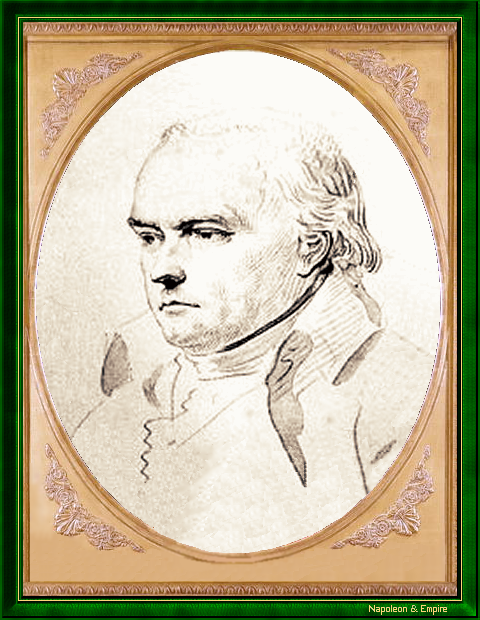Emmanuel Crétet
Count of Champmol
Pronunciation:

Crétet was born in Pont de Beauvoisin, Savoie, on February 10, 1747. Before the Revolution, he was a merchant who made frequent trips to the Americas, before settling in London and becoming director of the Paris fire insurance company.
During the Revolution, he made major purchases of national property, including the Chartreuse de Champmol, near Dijon. Elected to the Council of Ancients, he was particularly interested in economic and monetary issues.
On 18 Brumaire - which he may well have supported financially - he became a member of the commission responsible for drafting the new constitution. In December 1799, he became State Councillor and Senator.
In charge of the Ponts et Chaussées department and the land registry, he accomplished an impressive feat: piercing of the transalpine route via Mont Cenis, reorganization of the road network (to him we owe the star-shaped structure radiating out from Paris), regulation of carriage weights, development of the capital's quays, resumption of work on canals (in particular the Ourcq canal), fixing the dunes of Gascony, creation of new towns (Napoléon-Vendée, now La Roche-sur-Yon, and Napoléonville, now Pontivy-Nouveau), reorganization of the École des Ponts et Chaussées and the corps of engineers.
On April 22, 1806, he became the first governor of the Banque de France, and imposed a reorganization that strengthened state supervision.
On August 9, 1807, he was appointed Minister of the Interior, and on April 26, 1808, Count of Champmol. Ill on June 29, 1809, he was forced to resign from his ministry, and died in his home in the rue de la Municipalité five months later, on November 28, having killed himself in the process.
The Emperor had him buried in the Paris' Panthéon , in vault III.
"Emmanuel Crétet, Count of Champmol". Print of the nineteenth century.
